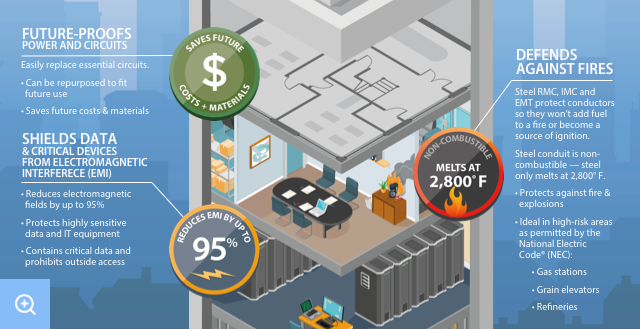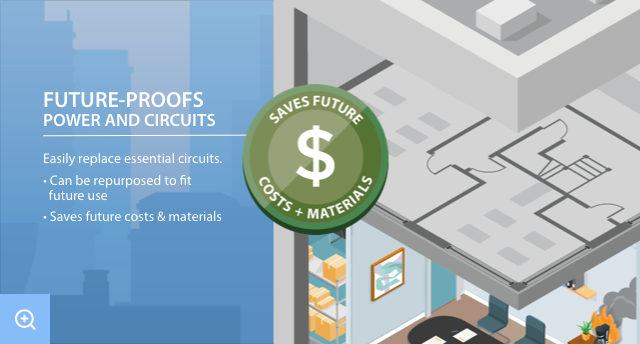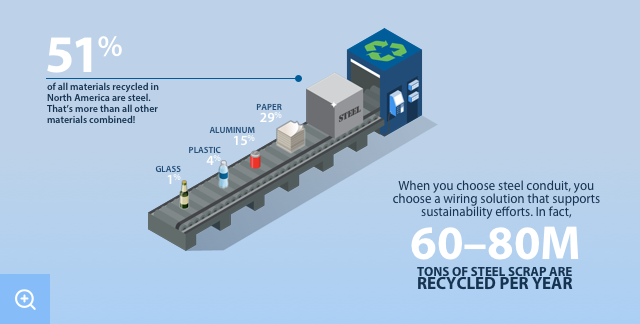
Resilience of Steel Conduit
The most recycled material by weight in the world and can be repeatedly recycled without the loss of metallurgical and engineering properties. Find out more about what makes steel a premier green construction material and why it should be considered when designing for sustainability.
According to USGBC’s Industry Statement on Resilience, resilience is “the ability to prepare and plan for, absorb, recover from, and more successfully adapt to adverse events.” It’s an important consideration for any community. That’s why many building owners and developers choose steel conduit and EMT, the most resilient raceway method.
Protection During Adverse Events
Steel conduit demonstrates the resilience needed to withstand adverse events of all kinds. Its durability protects conductors from natural disasters, and its high melting point ensures fire resistance. By maintaining its integrity, steel conduit and EMT also shield data and critical devices from electromagnetic interference (EMI). After an adverse event, electricians can easily return a raceway to service by following the advice in the article titled “After the Flood: Six Steps to Restoring Steel Conduit Electrical Systems.”
See the graphic below for more details on how steel conduit and EMT protect conductors during adverse events.

Download the full infographic >
Future-proofing With Steel EMT
Another aspect of steel conduit and EMT’s resilience is its ability to be repurposed as a building’s usage changes over time. Essential circuits can easily be replaced, saving time and material costs throughout the building’s future, as shown in the graphic below. A cost comparison proves that steel EMT is the most flexible and affordable raceway method.

Download the full infographic >
The Sustainability of Steel
When you choose steel conduit and EMT, you choose sustainability. That’s because it’s long-lasting; some steel conduit raceways have been in use for over 60 years. Plus, steel is the most recycled material, comprising 51% of all items recycled in North America — more than all other recycled materials combined! A total of 60–80 million tons of steel scrap are recycled per year. See the graphic below for details.

Download the full infographic >
An Introduction to Sustainable Procurement of Steel and Steel Conduit
In this exclusive webinar, Dale Crawford, Executive Director of the Steel Tube Institute, shares insights on the following learning objectives:
-Understanding the recyclability of steel – and how it can be repeatedly recycled without the loss of metallurgical and engineering properties
-Learning the resiliency of steel conduit and how it allows you to make changes to buildings without the need to tear everything out
-The benefits of steel conduit’s ability to to mitigate EMFs
-Understanding steel’s high reclamation rate, long service life, and ability to accommodate new conductors and circuits over time
Contact Us
Contact us to learn more about the advantages of steel conduit.